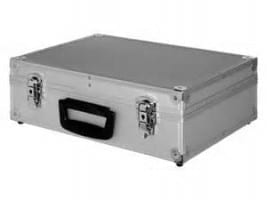The crux of a recent Accounting Standards Update (ASU) is how the deferred taxes are classified. And the not-so-secret solution to the Financial Accounting Standards Board’s (FASB) ongoing Simplification Initiative can be found in ASU 2015-17, Balance Sheet Classification of Deferred Taxes. The password is “noncurrent.”
The Simplification Initiative, implemented in 2014, strives to reduce the cost and complexity of financial reporting, while preserving or improving the value of the financial statements to users. Additionally, the amendments in the ASU will align standards with the presentation of deferred taxes required by International Financial Reporting Standards (IFRS).
The new ASU will require that all deferred taxes be classified as noncurrent assets or liabilities on the classified balance sheet. Entities will not be required to determine whether or not a deferred tax asset is current or noncurrent. The ASU applies to all entities that present a classified balance sheet, and its aim is to simplify accounting for deferred income tax assets and liabilities.
Presently, accounting principles generally accepted in the United States of America (U.S. GAAP) require deferred tax assets and liabilities to be classified as either current or noncurrent on a classified balance sheet, based upon an estimate of when the deferred taxes were expected to be recovered or settled. The classification provides little value to users of the financial statements, as the classification of current or noncurrent often does not align with the time period when the deferred taxes were actually recovered or settled.
The amendments in this ASU may be applied either prospectively or retrospectively to all periods presented. If the ASU is applied prospectively, the entity should disclose the nature of and reason for the change in accounting principle and a statement that prior periods were not retrospectively adjusted in the financial statement notes for the first interim and first annual period of change. If the ASU is applied retrospectively, the entity should disclose in the financial statement notes for the first interim and first annual period of change, the nature of and reason for the change in accounting principle and quantitative information about the effects of the accounting change on prior periods.
For public business entities, the ASU is effective for financial statements issued for annual periods beginning after December 15, 2016, and interim periods within those annual periods. For all other entities, the amendments in the ASU are effective for financial statements issued for annual periods beginning after December 15, 2017, and interim periods within annual periods beginning after December 15, 2018. Early application is permitted for all entities.
It’s no secret that PYA can help your business make sense of classified balance sheets and discuss how new ASUs affect your financial statements. If you have questions about this ASU, or would like to request a speaker on this topic for your organization or event, contact PYA at (800) 270-9629.


